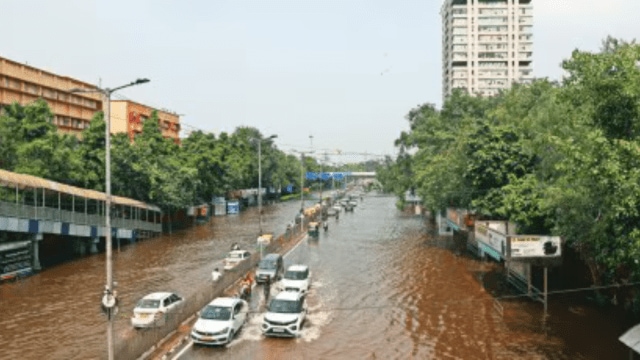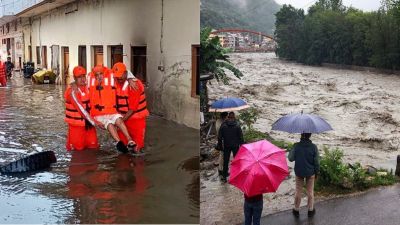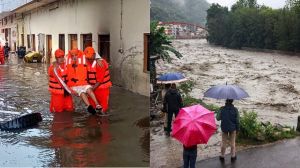Yamuna levels remain above evacuation mark in Delhi, forecasts show a falling trend
The highest recorded level in the Yamuna in Delhi was 208.66 m in July 2023, and prior to that, it was 207.49 m in September 1978.
 On Tuesday, the river crossed the evacuation mark of 206 m, and as per officials, it has so far led to the relocation of nearly 10,000 residents from low-lying areas.(Source: File)
On Tuesday, the river crossed the evacuation mark of 206 m, and as per officials, it has so far led to the relocation of nearly 10,000 residents from low-lying areas.(Source: File)
The Yamuna in Delhi recorded its third-highest water level since 1963, peaking at 207.48 metres at the Delhi Railway Bridge Thursday morning, according to data from the Irrigation and Flood Control Department.
As per the latest forecasts by the Central Water Commission (CWC), there is a possibility of a falling trend in the next few hours, even as it remains above the evacuation mark of 206 metres.
The highest-ever level in the Yamuna in Delhi was 208.66 m in July 2023 when the swelling river displaced more than 25,000 people, and before that, it was 207.49 m in September 1978.
On Tuesday, the river crossed the evacuation mark of 206 m, and as per officials, it has so far led to the relocation of nearly 10,000 residents from low-lying areas.
CWC said the Yamuna water is expected to dip slightly to 207.32 m by 8 pm Thursday. “The level is above the danger mark but below the highest flood level. There is a possibility of flooding in the next few hours. People are advised not to go near the river,” the forecast warned.
The water discharge had been 1.53 lakh cusecs at 5 am Thursday. “The Irrigation and Flood Control Department coordinates with the UP Irrigation Department to monitor the discharge of water from the Okhla Barrage. Higher discharge from the Okhla barrage is better for the smooth exit of water from Delhi,” an official said.
As per the Delhi Metro Rail Corporation Limited (DMRCL), the Yamuna Bank Metro Station is inaccessible due to the “escalating water levels of the Yamuna river”. DMRCL posted on X that, although the station is operational, the approach road leading to the station has been inaccessible, and advised people to plan their journeys accordingly.
Six districts in Delhi, including North, North East, Shahdara, East, Central and South East, have been put on flood watch. While Majnu ka Tila and Jharoda Khan reported waist-high water, a wall at the Nigambodh Ghat collapsed Wednesday, letting floodwater into Delhi’s busiest cremation ground.
Cremations have been halted at Nigambodh Ghat until further notice. On average, the site handles 55 to 60 cremations daily.
According to district administration officials, 38 relief camp locations have been set up across Delhi, with 522 tents installed at 27 sites to accommodate those displaced by the rising waters of the Yamuna. So far, 8,018 people have moved into tents, while another 2,030 residents are staying in 13 permanent shelters. Around 180 people are yet to be shifted from vulnerable areas.
The National Disaster Response Force (NDRF) has been deployed in the South East, Central and East districts, while Delhi government agencies, along with the Municipal Corporation of Delhi (MCD), Delhi Jal Board and Delhi Urban Shelter Improvement Board (DUSIB), are working to provide essential amenities such as food, drinking water, toilets and medical facilities.
Dedicated teams have also been mobilised to assist residents and help evacuate cattle from flood-hit zones.







